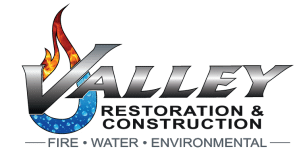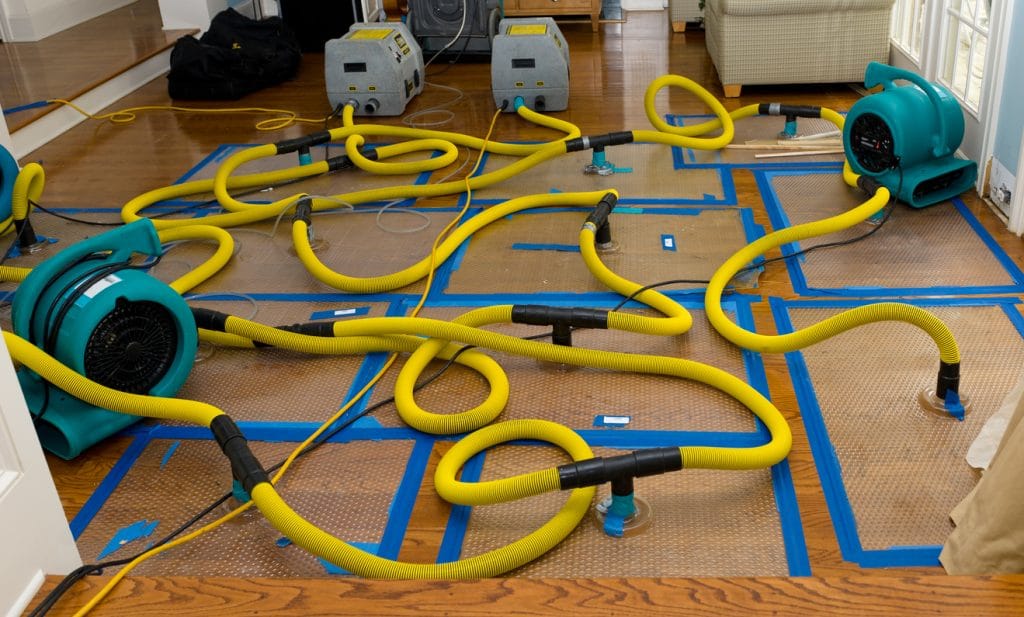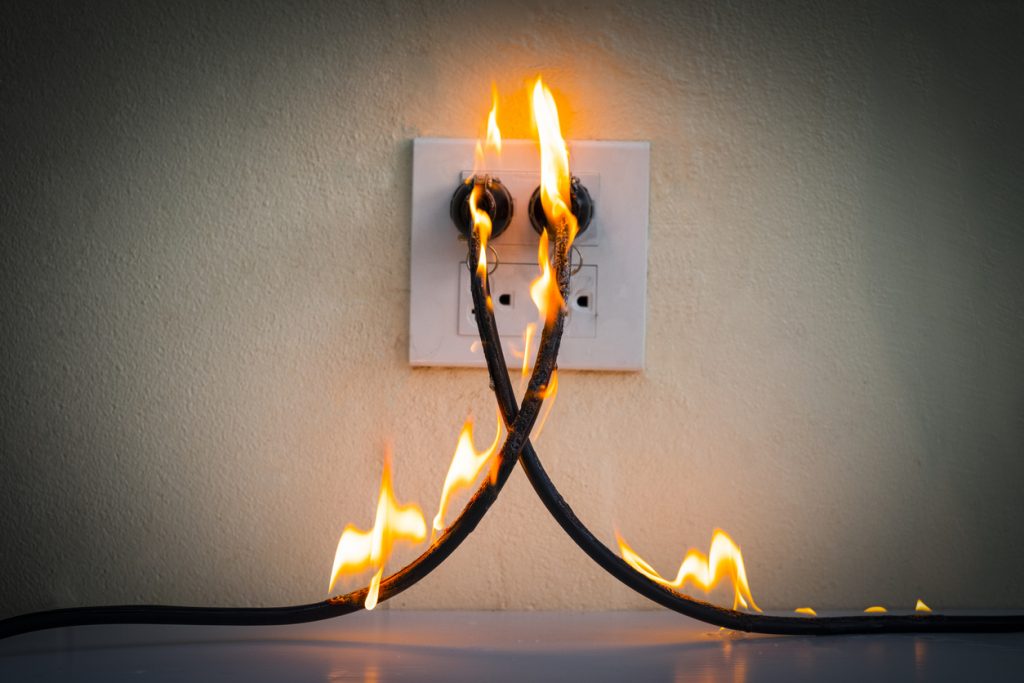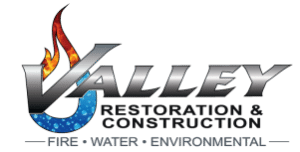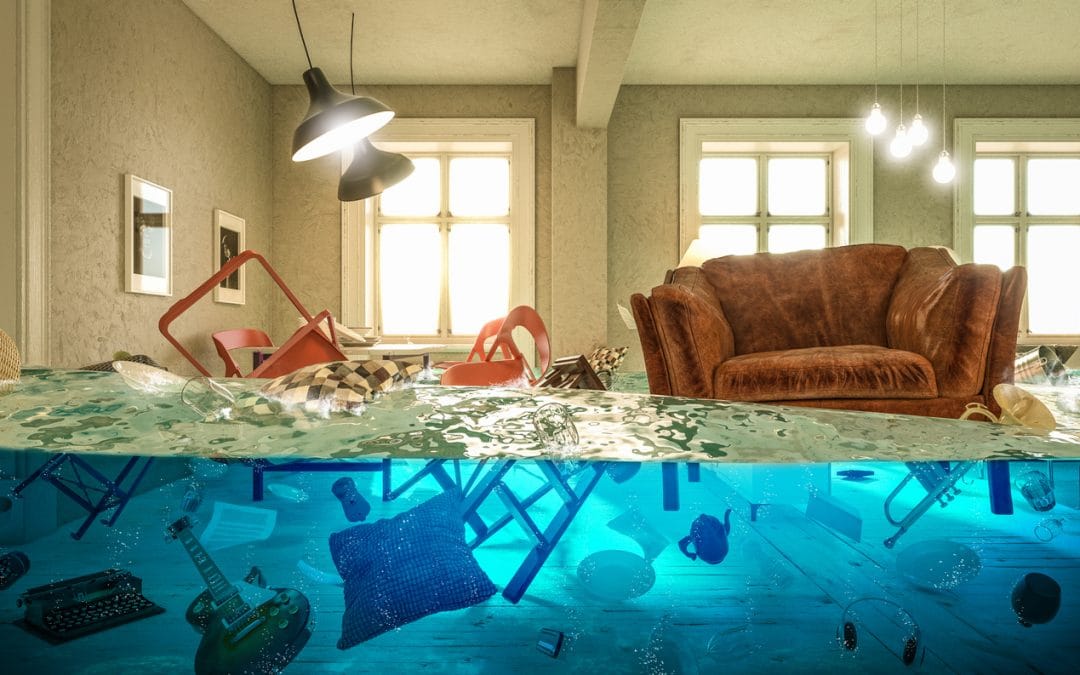
What is Emergency Mitigation?
One of the most important investments many people make is the purchase of their home or business premises. If something happens to it, the repercussions can be immense. Seeing your property after a fire or flood is a traumatic experience.
Thankfully, fire, water, and mold damage can be mitigated and restored by an experienced company specializing in emergency restoration.
Many property owners wonder what emergency mitigation and restoration is and whether it is necessary. It’s good to understand what these emergencies involve and how timely mitigation benefits your most important investment, so that you are prepared should it ever come to that.
Natural disasters happen: be prepared
A natural disaster at home can be overwhelming.
Water can flood parts or whole segments of a house and destroy electrical devices, clothes, furniture, and the floor, among others. If left unattended, water damage can also lead to mold and cause long-term damage.
Fire can burn ceilings, windows, and belongings and cause smoke damage that is particularly difficult to get rid of. Even as you put out the fire, the retardants and chemicals that fire extinguishers use can be hazardous and hard to clean.
What should you do in case of a natural disaster?
In the event of a natural disaster, the first step is to make sure everyone in your household or business is safe and accounted for.
Then, call the fire department if there is a fire. Turn off the water mains in case a ruptured pipe is causing water damage. In both cases, shut down the electrical main: fire melting cables can be as deadly as water leaking into light switches and power outlets.
The next step is to leave the house and call a reputable and trustworthy emergency restoration company.
When should I call my insurance company after a natural disaster?
Right after you call your insurance company, ask an emergency restoration company to assess the damage without interfering in any way with the actual damage. The restoration company can be onsite within a couple hours or less, whereas it may take the insurance company a few days to come out. While you are working with the restoration company, the insurance company can start their process and determine policy limitations, if any. If it turns out to be a small loss (less than or close to deductible), then the claim can be withdrawn at no consequence.
The company’s experts will come to appraise the damage: for instance, fire damage usually involves water damage, as water hoses are used to put out the fire. Experts will know whether mold will develop in the flooded parts of the building.
The emergency restoration experts will give you a general idea about the potential cost and their thoughts on what an insurance company is bound to cover. This can save you a lot of money—and hassle—down the road.
Do not clean up before the insurance company has inspected the property
Homeowners should never clean up before the insurance company has come to assess the damage. Insurance investigators need to see the whole damage without any prior intervention.
Once the danger is over and the insurance company has inspected the damage, a homeowner can begin with emergency mitigation and emergency restoration.
If it is not a significant loss, the restoration company will take photos. If given permission by the homeowner, they can work with the insurance company directly to determine the needed scope of work and resolve the damage according to the coverages of your policy.
What is the difference between emergency mitigation and restoration?
While some use the terms interchangeably, they mean quite different things.
What is emergency mitigation?
Emergency mitigation involves stopping any further damage to the house from fire, water, or the elements.
Emergency mitigation requires specialists to remove damaged furniture, debris, and damaged materials like drywall and flooring. Mitigation is also about ensuring the home’s structural stability and protecting its integrity—and your safety—by boarding broken windows and preventing any further damage.
If parts of the building such as the roof, windows, or the entrance door are exposed to the elements, emergency mitigation makes sure these are provisionally fixed until emergency restoration begins.
Emergency mitigation is all about stopping further damage to the building.
What is emergency restoration?
Emergency restoration involves returning the building to its former condition.
It covers everything from repairing the damage to cleaning, fixing, painting, or doing anything else that is necessary to make the building once again safe, habitable, and pleasing to the eye.
How do you restore a water-damaged house?
Water emergency mitigation requires a thorough inspection and assessment of the damage.
An expert will know where you may have hidden water damage, beyond what you can see at first glance. Specialists can detect hidden moisture. They will make sure that the water extraction process starts immediately: the sooner the water is extracted, the less the water damage or risk from mold.
Once the initial inspection is complete, the restoration crew will follow these steps:
1. Water extraction
Water mitigation means extracting the water from the house with powerful pumps that remove the standing water.
Places such as basements are particularly difficult to extract water from. Unfortunately, they are also the most prone to water and mold damage.
Be prepared for the fact that some of your belongings will be discarded. Damaged parts of the house such as wet ceiling panels will have to be replaced. To ensure your safety, restoration crews also pay extra attention to the electrical system, plugs, and cables that may have been damaged.
2. Drying and dehumidifying after water damage
Once all water has been removed, the emergency mitigation crew will start the drying and dehumidifying process.
The drying process goes further than drying the belongings that were salvaged. The crew will also dry wooden floors, carpets, and anything that can be restored. A mitigation company will also make sure that any lingering moisture is dried and will monitor the moisture levels to make sure that there is no underlying problem.
3. Mold and residual moisture monitoring
Moisture monitoring is necessary to confirm there is no mold.
If any mold is found, the emergency mitigation crew will take care of the problem and clean up with the appropriate equipment and detergents.
A professional emergency mitigation service will also ensure your safety by checking for category 3 water, aka black water. This contains unsanitary agents, harmful bacteria, and fungi that can lead to infections, illnesses, and long-term respiratory problems. If you come into contact with black water you risk even more serious health risks and even death.
4. Sanitizing, deodorizing, disinfecting
If the water came from outdoors or from a broken sewage pipe, or if black water is found, the property will require disinfection to make it safe and clean for habitation.
Once all water damage has been mitigated, the emergency restoration company will sanitize and deodorize the property, to verify there is no lingering moisture smell and that your house is once again suitable for living.
How do you restore a fire-damaged house?
In case of fire, mitigation deals with two important consequences: water damage and smoke damage.
The fire mitigation crew will first inspect and evaluate the damage to the building structure and to your belongings by both the water used to put out the fire and the smoke.
The specialists will then make an inventory of what is salvageable and what is not.
They will dispose of everything that is beyond repair or cleaning. This includes belongings, burnt floorboards, carpets, and other features. Fire-damaged areas of the house will be cordoned off from the rest of the house so that restoration work can begin there.
The crew will then remove all soot from any salvageable items and return them to their previous condition.
Once the initial fire inspection is complete, the steps below will be followed:
1. Water damage during a fire
The water used to put out a fire often causes its own damage. This water can linger on, especially in basements and behind walls, and cause mold.
A professional mitigation company will remove water with powerful pumps and will verify there is no lingering moisture or mold in the house.
2. Smoke damage during a fire
Smoke infiltrates everything and needs specialized equipment to get rid of.
Specialized fire mitigation companies know there are different types of smoke such as wet, dry, or soot smoke. These require different approaches during the cleaning process.
The fire mitigation crew will use specialized equipment that absorbs soot and smoke from walls, floors, ceilings, and other surfaces. The crew has the appropriate material and equipment to remove smoke odor from buildings and make them livable and pleasant again.
Lingering smoke can permeate a building and linger on for a long time, making it highly detrimental to people’s health. Therefore, it is essential to remove it immediately and effectively.
Smoke deodorization is an essential step in making your home safe again.
3. Cleaning up fire retardant chemicals
A crucial step of fire mitigation involves cleaning up the fire retardant chemicals used to put out the fire.
While these chemicals are very good for limiting a fire, they should not be breathed in. A professional team knows how to clean up them and make your home safe to live in once again.
4. Restoring the damage
Once all of the above is complete, it is time for the restoration. In some cases, the fire damage is extensive and requires significant structural reconstruction.
Fire restoration involves repairing all the damaged parts of the house such as windows, ceilings, wooden floors, wooden beams, doors, etc.
Experienced emergency restoration experts will guide you through the reconstruction process.
Make the most out of a disaster
Natural disasters are called emergencies for a reason: they are distressing events. But they can also be an opportunity for you to make the changes you have been dreaming about.
If your insurance company pays for the restoration, you can invest a little extra money to make the improvements and changes you have been meaning to. A more modern kitchen? A remodeled bathroom? A new wooden floor? Perhaps a flood or a fire can be the extra push you need to make your dream home come true.
